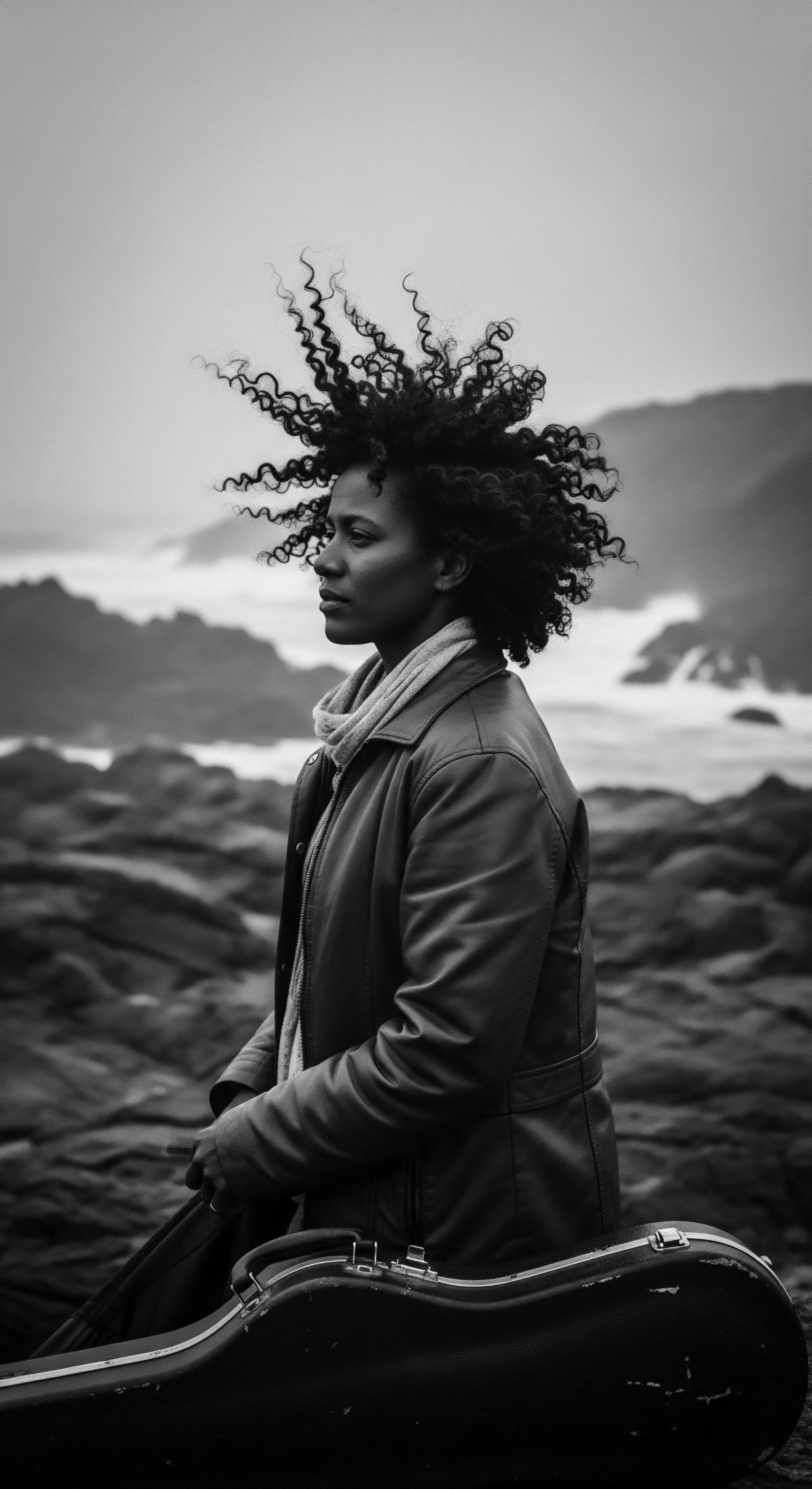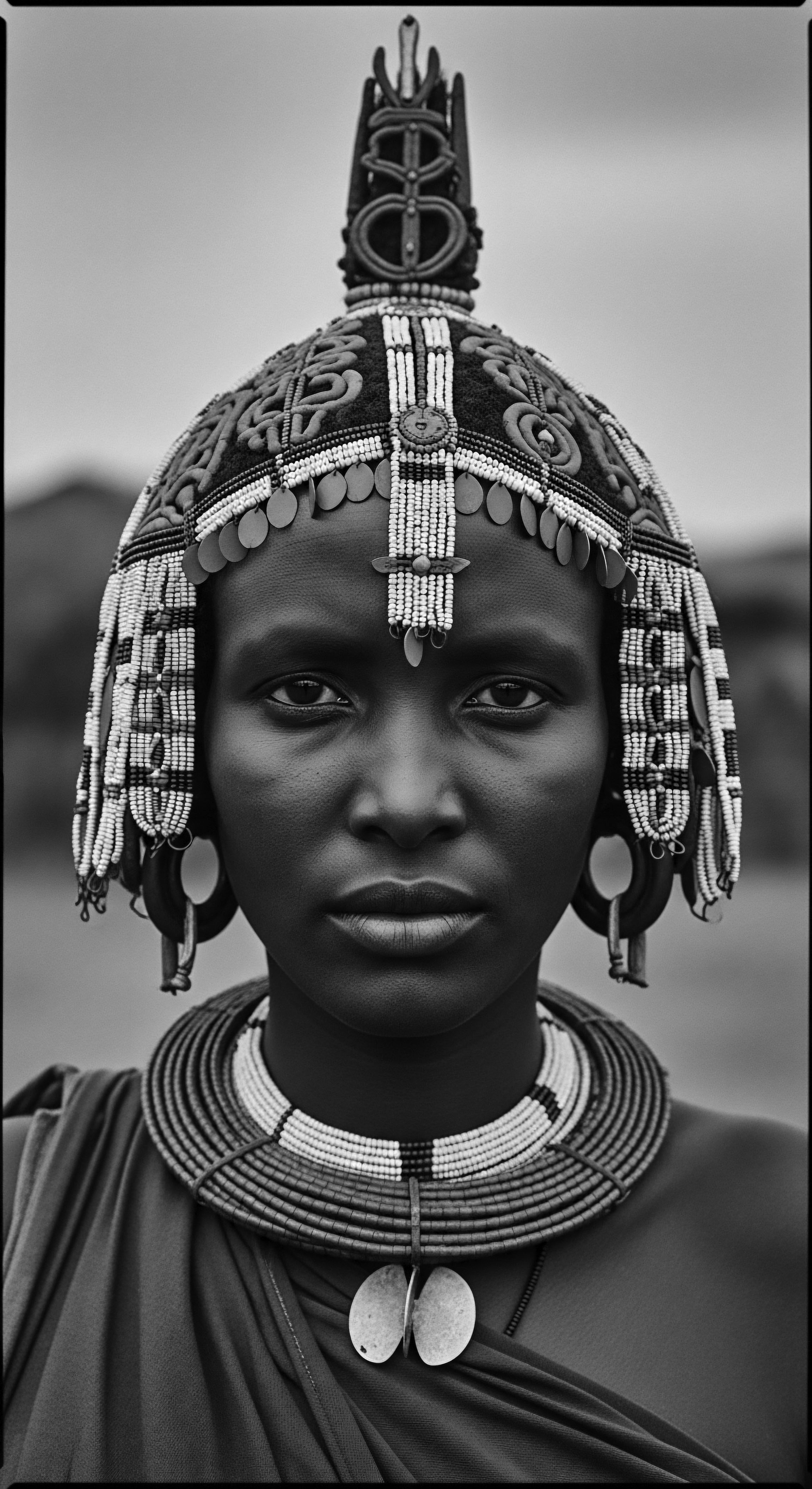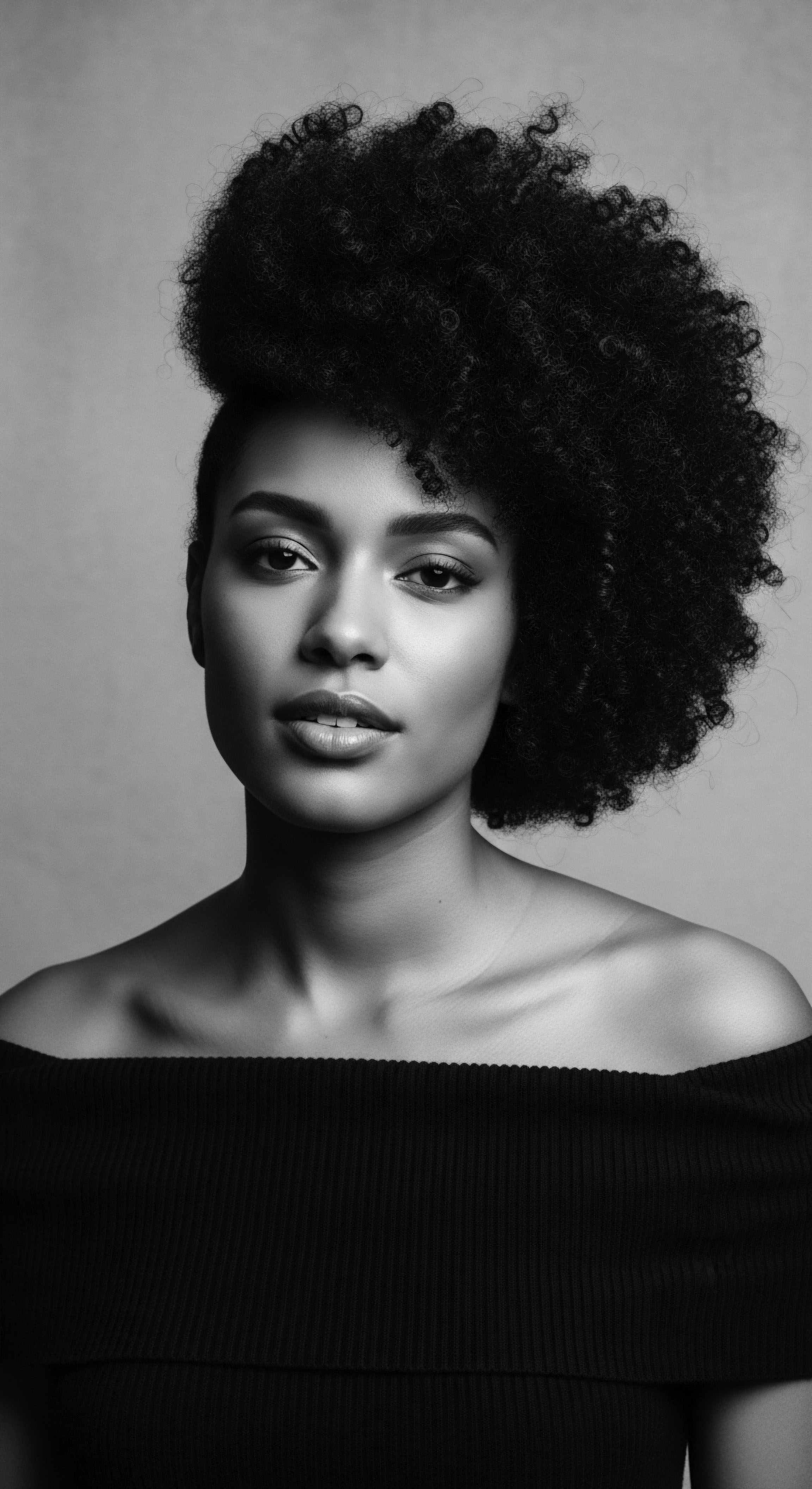
Roots
The sun’s embrace, the wind’s soft whisper, the dust that rises from ancient paths—these elemental forces have always shaped our lives, and with them, the very nature of our textured hair. For generations, across continents and through the deep corridors of human history, communities have intuitively understood the delicate balance between their environment and the vitality of their coils and curls. What we consider modern hair care often finds its echoes in the profound wisdom of ancestral practices, where the act of covering one’s hair held not only social and spiritual weight but also served as a remarkable shield against the world’s daily offerings. The headwrap, in its countless forms and vibrant expressions, stands as a testament to this enduring knowledge, a silent guardian of hair health and a profound marker of heritage.

The Anatomy of Textured Hair and Ancient Wisdom
Textured hair, with its diverse curl patterns, possesses a unique architecture. Each strand emerges from an elliptical or oval-shaped follicle, guiding its growth in a spiraling path. This inherent coiling means the cuticle layers, those protective scales that lie flat on straight hair, tend to lift more readily along the curves of a textured strand.
This characteristic renders our hair more susceptible to moisture loss and external influences, a truth long understood by those who lived intimately with the land and its seasonal shifts. Our ancestors, keenly observant, recognized that these coiled strands required particular consideration, a care often expressed through thoughtful adornment and covering.
Consider the hair shaft itself, a structure primarily composed of a resilient protein, Keratin. Environmental aggressors, including the sun’s potent ultraviolet radiation and pervasive air particles, can compromise this protective keratin and disrupt the hair’s external cuticle layer. This often leads to issues like dryness, brittleness, and breakage.
Long before microscopes revealed these truths, traditional societies devised strategies to mitigate such damage. Covering the hair was a primary, accessible method to create a physical barrier.

A Lexicon of Care and Cultural Classification
The language surrounding textured hair has evolved, yet ancestral terms often carry a depth of meaning our modern classifications sometimes miss. While today we categorize hair into types like 3A, 4B, or 4C, traditional communities might have described hair by its resilience, its sheen, or its response to humidity—qualities directly tied to its interaction with the environment. The very materials used for headwraps, such as naturally breathable Cotton for arid climates or smooth Silk for nighttime protection, reflect a deep understanding of textile properties and hair needs.
Ancestral head coverings offered a living library of knowledge regarding hair’s interaction with the surrounding world.
The understanding of hair cycles, from its growth to its resting and shedding phases, was often interwoven with broader concepts of life, renewal, and spiritual connection. Dietary practices, seasonal changes, and community rituals, all connected to the environment, played a part in maintaining robust hair health. Headwraps, by shielding the hair from dust, wind, and harsh sun, supported the hair’s natural vitality through its cycles, allowing for undisturbed rest and renewal, which many ancestral practices instinctively promoted.

Ritual
The rhythm of life, punctuated by the rising and setting of the sun, the ebb and flow of seasons, profoundly shaped the practices of hair care. For textured hair, vulnerable by its very structure to external forces, protection was not an afterthought; it was a ritual, a daily act of preservation. Headwraps were not merely decorative elements. They were practical tools, deeply integrated into ancestral regimens of care, allowing hair to thrive even in the face of demanding environments.

Headwraps as Original Protective Styling
Consider the concept of Protective Styling, a cornerstone of textured hair care today. The origins of this approach reach back millennia, long before the term was coined. Braids, twists, and locs—styles recognized for minimizing manipulation and safeguarding hair ends—have roots dating back thousands of years in African cultures.
Headwraps naturally complemented these styles, offering an additional layer of defense. They allowed individuals to enclose and shield their carefully crafted coifs from external damage, reducing exposure to environmental stressors.
The headwrap provided a seamless extension of these protective measures. Whether it was the Gele of Nigeria, the Doek of South Africa, or the Duku of Ghana, these coverings served as a primary line of defense. They functioned like a soft cocoon, minimizing friction, retaining moisture, and preserving the integrity of intricate hairstyles. This protective function extended beyond mere aesthetics; it was a matter of hair health and longevity.

How Did Traditional Methods Shield Hair from Sunlight?
The sun’s relentless rays, particularly in equatorial regions, posed a constant threat to hair and scalp health. Ultraviolet (UV) radiation can degrade hair proteins and oxidize melanin, leading to dryness, brittleness, and a loss of natural vibrancy. Traditional headwraps, crafted from dense or layered fabrics, acted as a physical barrier against this solar onslaught. This deliberate covering prevented direct exposure, safeguarding both the hair shaft and the sensitive scalp underneath.
Beyond sun, the wind, a relentless desiccant, can strip hair of its precious moisture, causing tangling and breakage. Dust, a pervasive environmental factor in many historical landscapes, could settle on hair strands, leading to grittiness and increased friction. Headwraps served as an effective shield against these elements, keeping hair clean, hydrated, and untangled.
| Environmental Element Sunlight & UV Radiation |
| Ancestral Headwrap Protection Dense, layered fabric wraps; wide, opaque textiles. |
| Modern Hair Care Strategies UV-filtering hair products; hats designed for sun protection. |
| Environmental Element Dust & Dirt |
| Ancestral Headwrap Protection Full head coverage; tightly wrapped styles to seal hair. |
| Modern Hair Care Strategies Anti-pollution hair sprays; regular washing with clarifying shampoos. |
| Environmental Element Wind & Air Dryness |
| Ancestral Headwrap Protection Moisture-retaining fabrics (e.g. silk linings); secure wrapping to prevent tangling. |
| Modern Hair Care Strategies Leave-in conditioners; moisturizing creams; protective styling. |
| Environmental Element Cold & Low Humidity |
| Ancestral Headwrap Protection Thicker, insulated fabrics; full coverage to trap warmth. |
| Modern Hair Care Strategies Humectant-rich products; hair oils; insulated hats. |
| Environmental Element The ingenuity of ancestral practices, particularly in utilizing headwraps, laid the foundation for understanding how to safeguard textured hair from the elements. |

Nighttime Rituals and Silk’s Legacy
The protection afforded by headwraps extended beyond daytime wear. The nighttime hours, often overlooked in contemporary hair care, were profoundly significant in ancestral traditions. Sleeping directly on abrasive surfaces, even those as seemingly innocuous as cotton, can cause friction, leading to tangles, breakage, and moisture loss for textured hair. The wisdom of using smooth, low-friction materials like Silk or Satin for nighttime coverings, or bonnets, is a testament to this understanding.
These materials create a gentle barrier, allowing hair to glide without resistance, preserving carefully set styles and retaining vital moisture. This practice, observed in various cultures, underscores a sophisticated, intuitive grasp of hair mechanics long before modern science articulated the concept of cuticle integrity.
Headwraps, whether for daylight or slumber, embody a timeless wisdom in safeguarding hair from the world’s often abrasive touch.
From the practical shielding against harsh desert sun to the tender care offered during slumber, headwraps have been more than mere fabric. They served as a constant companion in the journey of textured hair, a silent partner in its care, deeply rooted in the daily and nightly rituals of ancestral communities.

Relay
The legacy of headwraps, far from being a static relic of the past, lives and breathes in the present, continually informing our understanding of textured hair health and identity. The nuanced interplay of historical context, scientific insight, and cultural practices reveals a profound and continuous journey of care and resilience. Headwraps, through their enduring presence, offer a tangible connection to ancestral wisdom, providing practical solutions to environmental challenges while simultaneously serving as powerful statements of cultural pride and continuity.

How Does Fabric Choice Impact Headwrap Protection?
The selection of fabric for headwraps, a decision often guided by practical needs and available resources, profoundly influences their protective capabilities. Historically, natural fibers like cotton, linen, and later silk, were chosen for their distinct properties. For example, in hot, arid climates, breathable Cotton wraps offered relief from the sun and dust, allowing air circulation while shielding the scalp. Conversely, the smooth surface of Silk and Satin was valued for its ability to reduce friction on hair strands, a quality recognized centuries ago in cultures across Asia and Africa.
This discerning choice of material was not arbitrary. It reflected an empirical understanding of how different textiles interacted with textured hair, minimizing damage and preserving moisture. Modern scientific study now validates these ancestral preferences, demonstrating how silk’s smooth surface helps prevent frizz and breakage by reducing mechanical stress on the delicate cuticle layers.

The Tignon Laws and Environmental Elements of Oppression
One particularly poignant historical example illustrating the protective nature of headwraps, both against physical elements and the more insidious environmental pressures of oppression, centers on the Tignon Laws of 18th-century Louisiana. In 1785, Esteban Rodriguez Miró, the then Spanish colonial governor, issued legislation mandating that free Black women in New Orleans cover their hair with a tignon or scarf. This law aimed to strip these women of their visible markers of beauty and social standing, which often included elaborate hairstyles, intending to reinforce racial hierarchies and signify their supposed inferior status.
However, in a remarkable act of defiance and cultural preservation, these women transformed the imposed head covering into an extraordinary expression of style, beauty, and resistance. They used luxurious fabrics, vibrant colors, and intricate tying techniques, turning a symbol of subjugation into a badge of dignity and creativity. This act of transforming the tignon from a tool of oppression into an accessory of pride speaks to the multifaceted ‘environmental’ elements headwraps guard against—not just sun or dust, but the social climate of discrimination and the psychological toll of enforced inferiority. The headwrap, in this instance, became a tangible manifestation of resilience, a way to shield one’s spirit and identity.
The ways in which headwraps guard against environmental elements are numerous, extending beyond mere physical shielding. They serve as a comprehensive protective solution for textured hair, minimizing exposure to various aggressors that can compromise its health and vitality.
- Sun Exposure ❉ Headwraps offer a physical barrier against harmful UV radiation, which can degrade hair’s protein structure and lead to dryness and brittleness. This is particularly valuable for textured hair, which tends to be more susceptible to moisture loss.
- Wind and Dust ❉ A securely tied headwrap prevents wind from tangling and drying out hair strands. It also acts as a shield against airborne pollutants and dust particles that can accumulate on the hair and scalp, contributing to dryness and dullness.
- Cold Weather ❉ In colder climates, headwraps provide an insulating layer, protecting hair from the harsh, dry air that can strip moisture and cause breakage. They help maintain a more stable environment around the hair and scalp.
- Mechanical Damage ❉ By keeping hair tucked away, headwraps reduce the need for frequent manipulation, such as combing or styling, which can lead to friction and breakage, especially for delicate textured strands. This minimizes mechanical stress, allowing hair to rest and retain its length.
- Moisture Preservation ❉ When paired with moisturizing products and especially when lined with silk or satin, headwraps create a microclimate that helps trap and retain moisture within the hair shaft, combating the inherent tendency of textured hair to dry out quickly.
The headwrap’s enduring power lies in its capacity to protect not just hair from the elements, but also the spirit from the sting of historical injustices.

Headwraps and Holistic Hair Health in Ancestral Philosophies
Ancestral wellness philosophies often viewed hair as more than just physical strands; it was an extension of self, deeply connected to one’s spiritual, social, and physical well-being. Headwraps, therefore, contributed to holistic hair health by addressing multiple dimensions. They provided physical defense, certainly, but also psychological comfort, cultural continuity, and a visual statement of identity that defied attempts at erasure.
The act of wearing a headwrap, steeped in generations of meaning, could instill a sense of dignity and belonging, acting as a buffer against the ‘environmental’ pressures of societal judgment and prejudice. This integration of practical protection with profound cultural significance makes the headwrap an exceptionally powerful tool in the heritage of textured hair care.

Reflection
As we gaze upon the intricate folds and vibrant patterns of a headwrap, we see not merely a piece of fabric, but a living, breathing archive—a testament to the enduring wisdom of those who walked before us. Roothea’s ‘Soul of a Strand’ philosophy centers on this profound connection ❉ the hair on our heads carries stories, resilience, and an unbroken lineage of care. Headwraps, as guardians against the elements, have always been part of this narrative. They speak to the ingenuity of our ancestors, who, through observation and understanding of their natural surroundings, devised practical yet deeply symbolic ways to nurture and protect textured hair.
This ancestral wisdom, passed down through generations, continues to shape our understanding of holistic hair health, reminding us that true care extends beyond topical applications, reaching into the very core of our heritage. The journey of the headwrap, from a shield against sun and dust to a crown of resistance and identity, echoes the timeless strength of textured hair itself—ever evolving, yet always rooted.

References
- Allen, Maya. “Braids, Plaits, Locs ❉ The History of Black Protective Hairstyles.” Royaltee Magazine, 2021.
- Afro Street. “The Cultural Significance of Headwraps & How to Wear Them ❉ Embracing Heritage and Style,” 2025.
- JD Institute of Fashion Technology. “Headwraps ❉ History and Evolution,” 2021.
- Nouri, Mythili. “Impact of Environmental Stressors on Hair.” NYSCC, 2021.
- Obé Headwear. “Significance of Headwraps ❉ Hair Care,” 2024.
- Sinosilk. “A Guide to Different Head Wraps,” 2024.
- Esme Luxury. “Silk Hair Wraps in Different Cultures ❉ A Global Perspective,” 2024.
- Leone Culture. “Exploring the Significance Of Headwraps In African Fashion And Traditions,” 2023.
- Nourished Springs. “Can Head wraps Serve as a Protective Style for Afro-Textured Hair?,” 2024.
- Age of Revolution. “Cotton Kerchief (Headwrap),” n.d.
